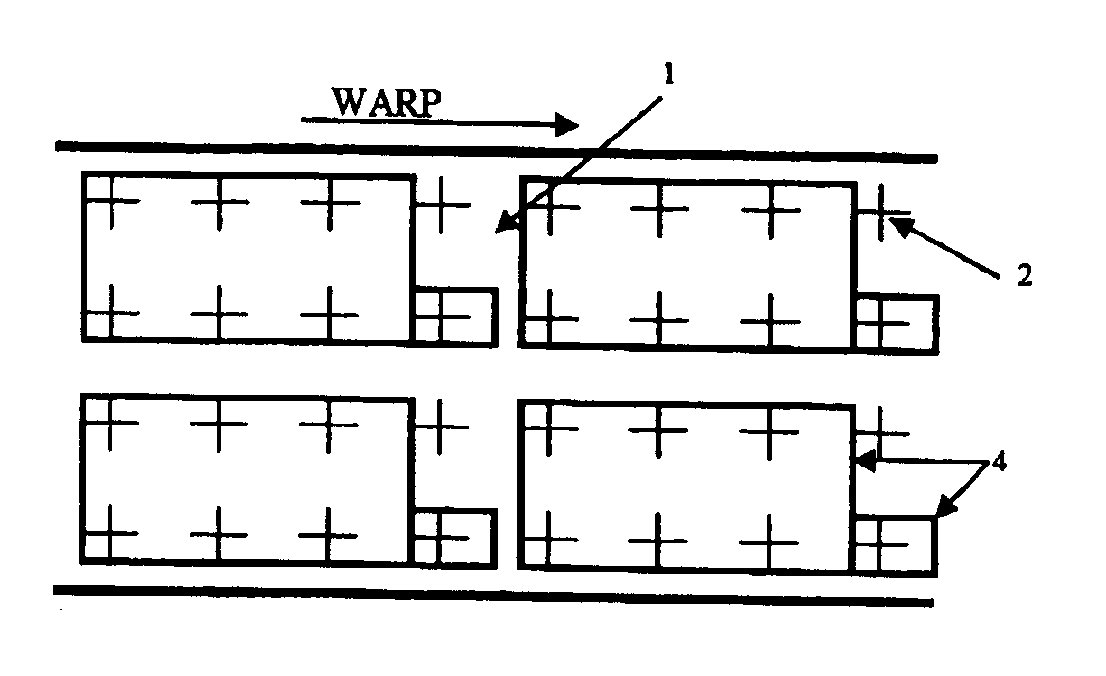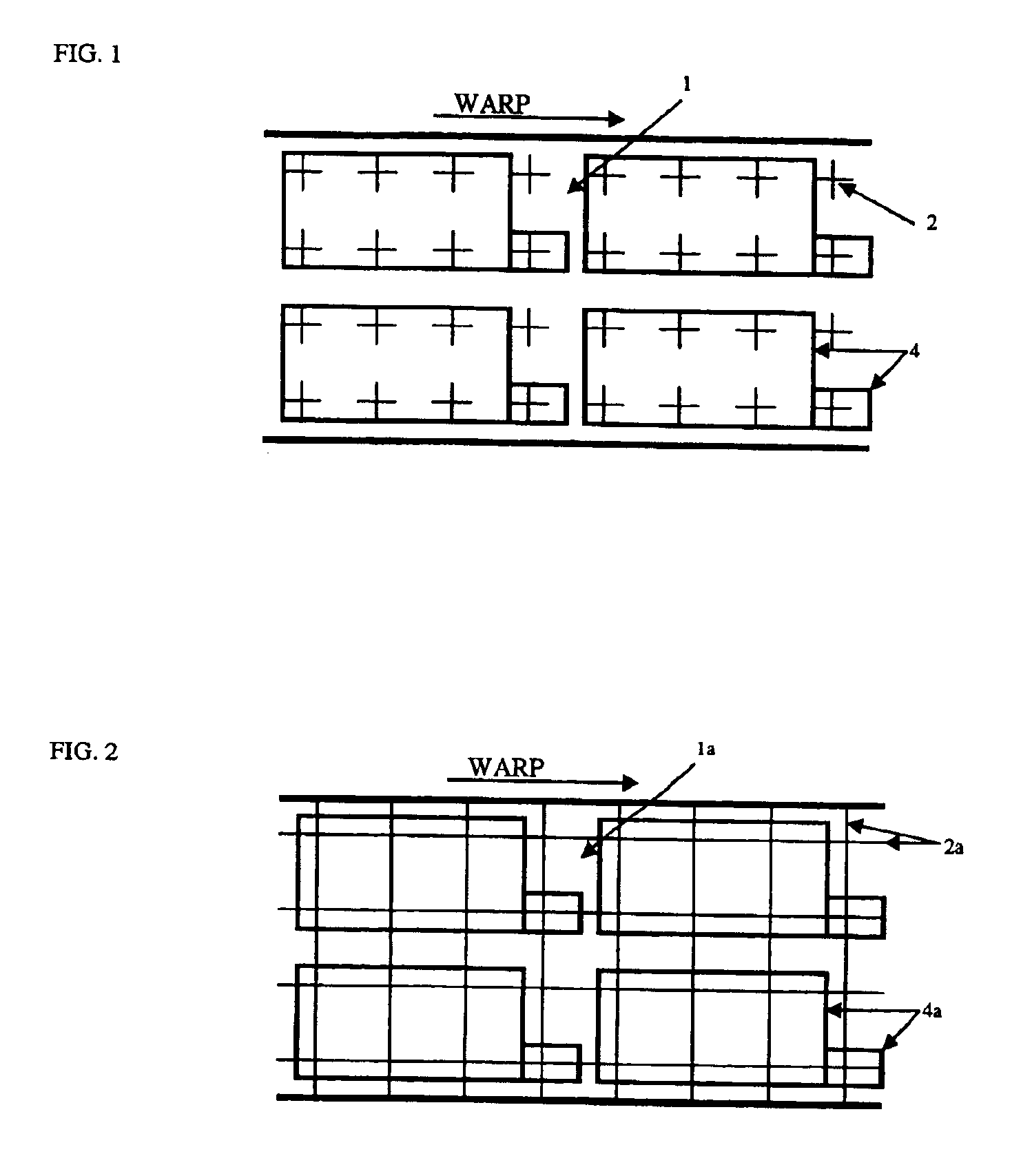Method for producing airbags
a technology of airbags and air bags, applied in the direction of pedestrian/occupant safety arrangements, electromagnetic radiation sensing, instruments, etc., can solve the problems of opw dimensions not being automatically taken into account or corrected, and the difficulty of adapting an action to the discrete contour of the airbag in the fabri
- Summary
- Abstract
- Description
- Claims
- Application Information
AI Technical Summary
Benefits of technology
Problems solved by technology
Method used
Image
Examples
Embodiment Construction
[0016]The invention will now be described by way of an example in producing an OPW. In preparing the warp threads in the warping shop, warp threads suitable as machine-readable marker threads are already included in the warp. In weaving the air bag fabric weft threads suitable as machine readable marker threads are included in the weave of at least part of the cloth width. In subsequent cutting out the air bag from the air bag fabric by means of a cutting system, the cutter is guided by said machine-readable marker threads included in the weave.
[0017]Before or during cutting the actual positions of these threads or markers are “seen” in a suitable system and compared to the wanted positions stored in a program sequence for cutting OPW or air bag parts and the differences used in automatically adapting the cutting program (e.g. re-sizing). This now eliminates costly manual intervention, automatic adaption permitting production to extremely tight tolerances as well as extremely critic...
PUM
| Property | Measurement | Unit |
|---|---|---|
| width | aaaaa | aaaaa |
| conductive | aaaaa | aaaaa |
| dimensions | aaaaa | aaaaa |
Abstract
Description
Claims
Application Information
 Login to View More
Login to View More - R&D
- Intellectual Property
- Life Sciences
- Materials
- Tech Scout
- Unparalleled Data Quality
- Higher Quality Content
- 60% Fewer Hallucinations
Browse by: Latest US Patents, China's latest patents, Technical Efficacy Thesaurus, Application Domain, Technology Topic, Popular Technical Reports.
© 2025 PatSnap. All rights reserved.Legal|Privacy policy|Modern Slavery Act Transparency Statement|Sitemap|About US| Contact US: help@patsnap.com


